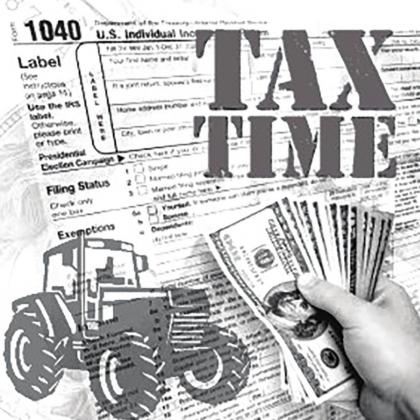Nine out of 10 full IRS audits generally have returns with $100,000-plus losses on Schedule C. It is critical to know the rules on depreciation.
Dairy cows and breeding cattle can be depreciated. Cattle that are just held for resale are not depreciated. Depreciable cattle can be written off over five years or even one year using bonus depreciation or the Section 179 deduction. Cows should be set up as assets and depreciated, rather than just being written off as a regular expense.
The problem of writing off capital purchases as regular expenses is common. Some amateur accountants will put trucks, tractors, and all sorts of assets posted to expense accounts labeled “truck expense” or “tractor expense.” They don’t belong there.
They should be posted to asset accounts, and the corresponding annual depreciation expense should be posted to an account called accumulated depreciation. A tractor and its accumulated depreciation will sit on a balance sheet from the day it is bought until the day it is sold. Then a gain or loss on the equipment sale is recognized based on the sale proceeds.
Wrongly posted assets are not the only problem. Clients with no records who have their expenses memorized will be in real trouble if audited. All deductions could be removed.
This issue of missing records is a big problem when someone is given a farm or inherited one long ago and then sells the farm. Under current tax laws, the filer would get stepped-up basis, using date of death values for inherited property. However, this requires that someone had the foresight to get an appraisal as of the date of death. Normally, when the taxpayer has no idea about the basis for a farm sale, the tax preparer is going to guess at a conservative number or just call it $0 basis, which means maximum taxation. Keep those real estate purchase records forever and be sure to obtain and retain appraisals for inherited property.
Continuing with the missing record theme, there are many small-business owners
(including farmers) with no records for their use of personal vehicles. When claiming a vehicle partially with some personal use there must be mileage records of dates, destinations, distances, and purposes for the mileage in order to claim 56¢ per mile as a tax deduction (for 2021).
One piece of backup farmers probably get annually is a 1099-G from the USDA. It reports various ag program payments received, including CRP rents. Schedule F and Form 4835 have separate lines for ag program payments, and those lines are the right place to report the payments. Sometimes there are farm income statements not delineating the difference between crop sale proceeds and ag program payments; it’s just shown as one bucket of “farm revenue.” The IRS computers are looking for program payments, so report those numbers in the place the computers are seeking them. The same goes for 1099- PATRs, which report co-op distributions.
Finally, understand the difference between active and passive farm activity and how that affects reporting. On an individual Form 1040, farm activity is reported either on a Schedule F or a Form 4835. A Schedule F is where active farmers report and Form 4835 is for inactive farm landlords.
What makes someone an active farmer vs. passive? This can be a gray area. Clearly, someone working full-time as a farmer and netting $100,000 each year is active, and someone getting cash rent and never setting foot on the farm is passive. Unfortunately, there are myriad situations in between and many people reporting on the wrong form.
An active farmer reporting on Schedule F can take an infinite amount of losses against other income, which could be a spouse’s salary, a part-time job, or stock dividends. Losses on Form 4835 are passive, which are limited to between $0 and $25,000, depending on the income level. So, if you have an executive making $250,000 in salary and renting out 10 acres of hay on a 50- acre farm (with a personal-use hunting cabin), that tax filer cannot take losses from the passive activity. However, if it’s incorrectly reported on a Schedule F, that will happen.
The other big difference is that net income on Schedule F is subject to self-employment tax, and net income on Form 4835 is not. Active farmers who errantly report on a Form 4835 skip paying self-employment taxes (Social Security and Medicare) on the income, which the IRS frowns upon.
Bottom line, see a tax preparer who understands the subtleties of farm income reporting.

